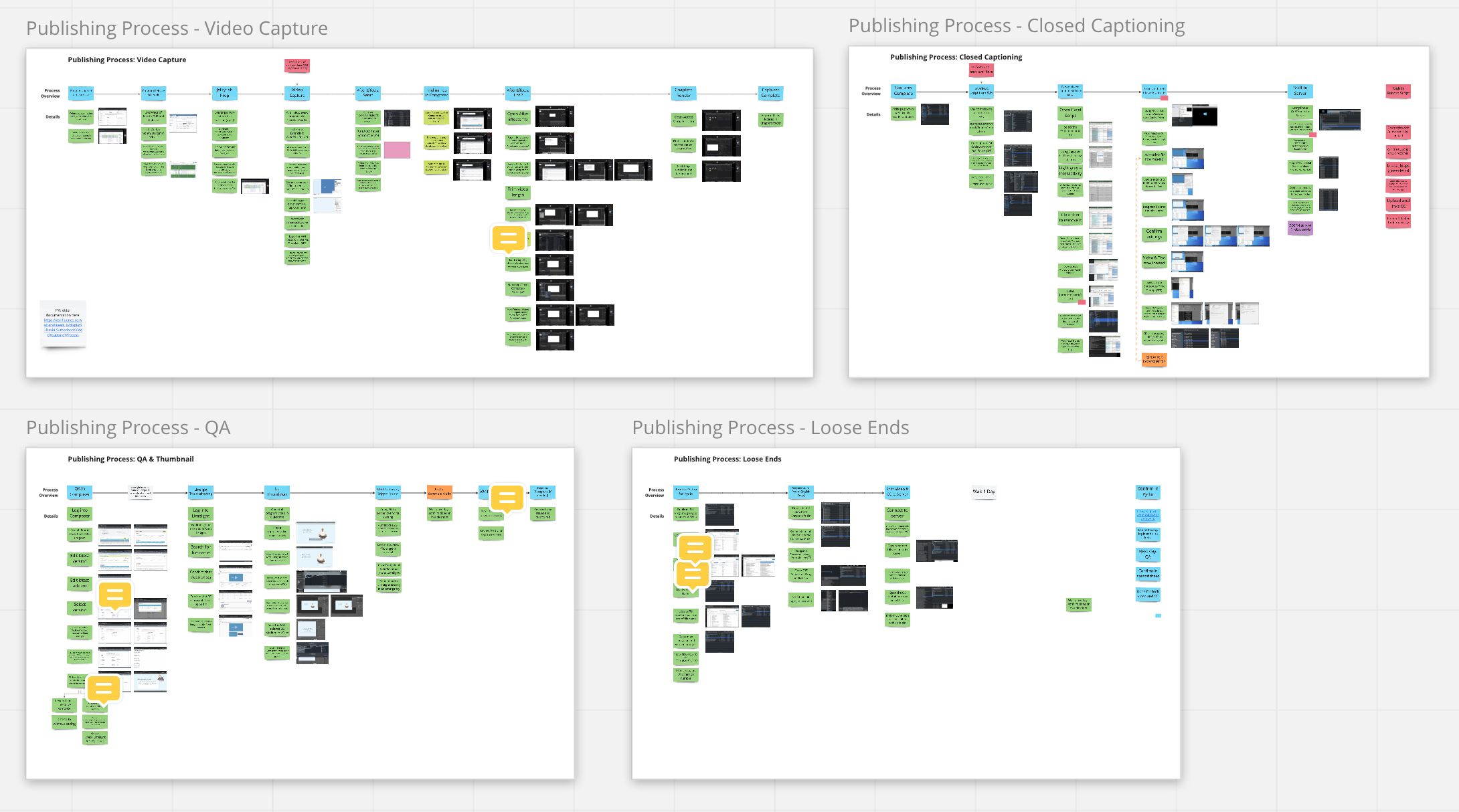Design Thinking
Design needs space to explore the various ways a desired outcome can be achieved, but it’s important to understand that design does not exist in a vacuum. It’s part of a larger organization with business objectives, restrictive budgets, and packed timelines. In order for a design to be successful, it needs to get implemented. Below are some of the tools, workflows, and processes I’ve created to help my team identity areas for improvement, increase efficiencies, and expand influence across the organization.
Patient Communication Analysis
Tasked with increasing patient engagement, I started by documenting the patient communication experience as well as our technical flow. This analysis helped identify the need for a new communications dev team, set a strategy for that team, and prioritized opportunities for improvement with the lowest lift / highest reward.
Production Style Guides
In order to reduce the number of revisions required to publish our video content, style guides were developed to clearly define best practices for spacing, font styles, and interactivity. This resulted in a dramatic reduction of revisions and allowed the creative director to focus on impact the larger content narrative.
Authoring & Publishing Workflow
Emmi’s interactive multimedia content has expanded by a factor of 8 in just a few short years. This has put strain on existing manual processes that required new solutions in order to scale. By reviewing publishing workflows across multiple divisions, I was able to:
Create a full visualization of the publishing process
Identify opportunities for templating and automation
Help define requirements for the solutions requiring dev resources
Segment work into smaller, manageable projects
Advocate for space on the roadmap
Interactive Sales Demo
After a major new product release, I reached out to the sales team to see if I could help review the sales process and elevate the client experience. My design team shadowed sales pitches and performed a design audit on pitch collateral to ensure our strongest content was being showcased in a connected brand story. We then evolved the presentation into a more interactive experience where the prospect’s phones could be prompted via SMS to directly engage in the patient experience, which also acts as an interactive leave behind.
End-to-End Patient Experience
An audit of the full patient experience became an invaluable tool for my design team to identify opportunities for improvement and inconsistencies in brand expression. It also helped other teams expand their understanding beyond their silos of work to see how their contributions shape the larger, wholistic experience.
Expedited Content Review
Our Health Journey product engages with patients for several days/weeks after a health episode to determine their likelihood of becoming high risk and preemptively triggering clinical intervention. One of the last obstacles in closing a Health Journey sale is a detailed review of the interactive content across the entire decision tree.
The content team was struggling with this requirement as they only had their convoluted internal scripts to use in the client content review process. As a result, I developed an Adobe XD clickable prototype to facilitate an easier content review process while also demonstrating the patient experience. It was built in an intuitive manner so that non-designers on the Editorial Team could modify it for other demos as needed. On average, this tool reduced the client content review meetings from 3 to 1 resulting in a 2 month faster contract close.







